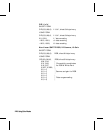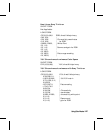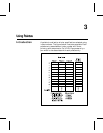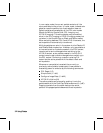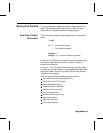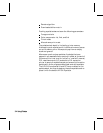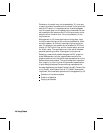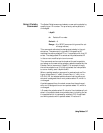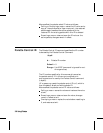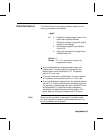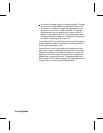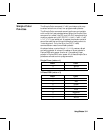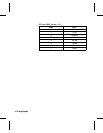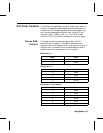
Palettes on the stack may not be selected by ID, since only
a copy of a palette is pushed onto the stack; the original pal-
ette and ID remain in the palette store. A palette popped
from the stack goes into the palette store, becomes the new
active palette, and assumes the ID of the previously active
palette, which is overwritten. Only one palette at a time
may be active.
Management by ID allows applications to tag data, have
multiple raster configurations, and have palettes for differ-
ent color spaces—all without reconfiguring the active pal-
ette. For example, one palette can be created for PCL text,
one for HP-GL/2 primitives, one for simple raster, and one
for 24-bit raster. The application can then switch between
palettes according to what is being sent to the printer.
Selecting a new active palette changes the PCL graphics
state. Besides color entries, a palette also contains the
graphics state at the time the bitmap representation of the
palette colors was created. This guarantees color reproduc-
tion integrity by insuring that the same color specification
triplet always produces the same bitmap representation.
As described below, the Select Palette (?&p#S), Palette Con-
trol (?&p#C), and Palette Control ID (?&p#I) commands
implement the three basic operations of management by ID.
Selection of the active palette
Deletion of palettes
Copying of palettes
3-6 Using Palettes3-6 Using Palettes



